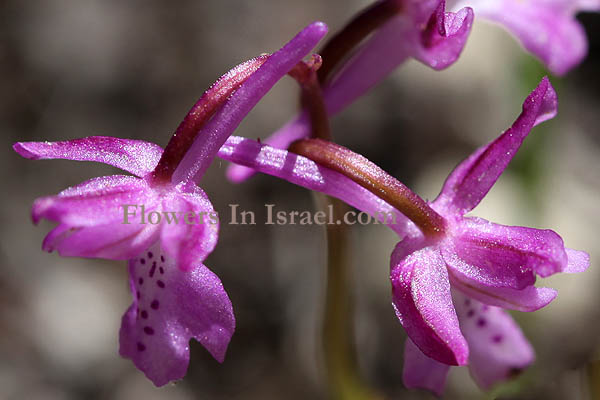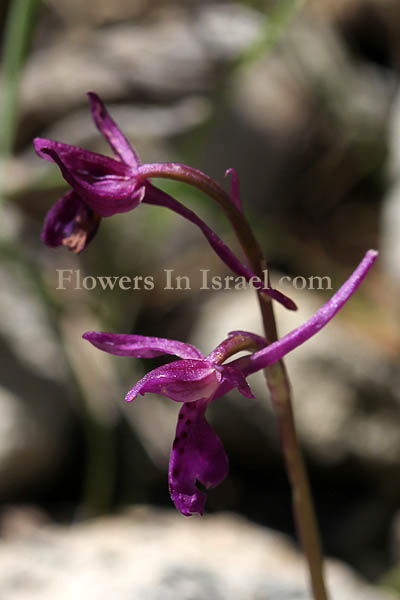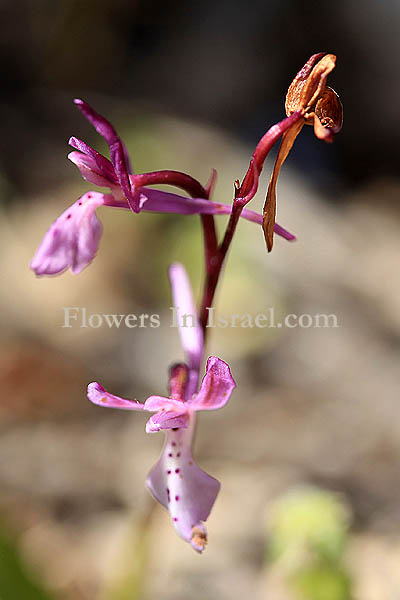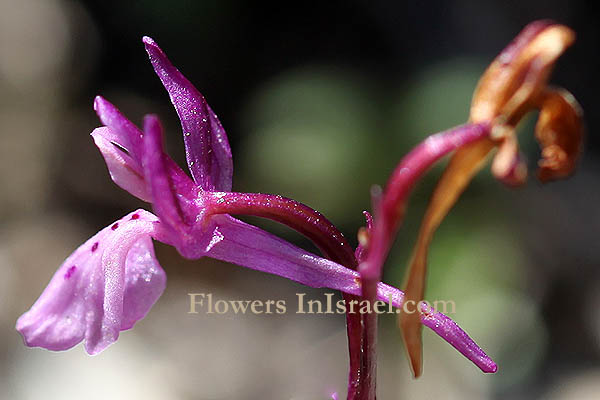Hebrew: סחלב אנטולי , Arabic: سحلب , اوركيد الاناضول
| Scientific name: | Orchis anatolica Boiss. | |
| Common name: | Anatolian Orchid | |
| Hebrew name: | סחלב אנטולי | |
| Arabic name: | سحلب , اوركيد الاناضول | |
| Family: | Orchidaceae, סחלביים |

|
| Life form: | Geophyte | |
| Stems: | Up to 40cm in height; dark, reddish stem | |
| Leaves: | Alternate, rosette, entire, smooth | |
| Flowers: | Purple, pink | |
| Flowering Period: | March, April | |
| Habitat: | Mediterranean maquis and forest, Batha, Phrygana | |
| Distribution: | Mediterranean Woodlands and Shrublands, Montane vegetation of Mt. Hermon | |
| Chorotype: | Mediterranean | |
| Summer shedding: | Ephemeral | |
| Protected Flower, צמח מוגן: | Yes |

Derivation of the botanical name: Orchis, ορχιϛ, "testicle" (here, shape of), from the rootform of some species. For that reason, Orchis has been regarded since antiquity as an aphrodisiac. anatolica, "Anatolia"; of Anatolia, western Turkey. The Hebrew name: סחלב, sahlav, Arabic sahlab, corrupted from tha'lab in husa al-tha'lab (=the fox’s testicles), the Arabic name of the tubers of the Orchis mascula (so called from the resemblance of the roots to testicles).


|